Japanese operator Au, which is part of KDDI, introduced another smartphone from the Infobar series at the beginning of the year. These devices are designed by renowned Japanese designer Naoto Fukasawa, while the latest model, A03, was designed by web designer Yugo Nakamura. I want to tell you about the new 'infobar', just so that you and me appreciate this thing and, perhaps, also see that there are still companies in the world whose values are not limited to increasing sales and releasing the most powerful and 'clear '' smartphones.
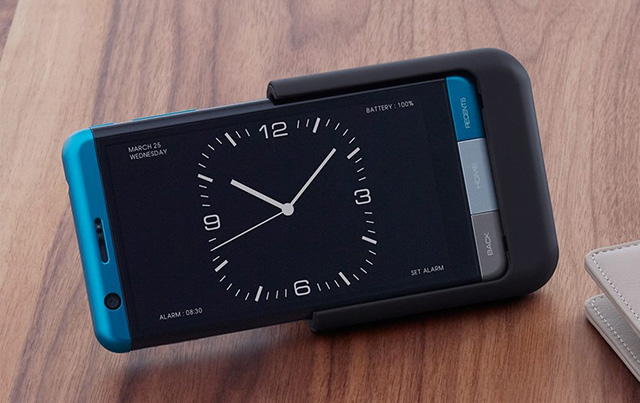
The devices of the infobar line for the au operator stand out against the background of ordinary smartphones, first of all, by the design of both the model itself and its interface. Manufacturers are different companies, there is no binding in any one brand, they are related only by the country of production – Japan. For example, the Infobar A01 smartphone was made by the Japanese company Sharp, and the new A03, again, by the Japanese Kyocera.
Infobar A03 retains the branded features of the line – square keys, a combination of several colors, including a different color for buttons next to each other, as well as a branded UI with square blocks, like the interface Windows Phone. I have already said this in my material about Infobar A01, but I will repeat it again: strange, but true, the square interface in Infobar looks nicer and better than the tile in WP.
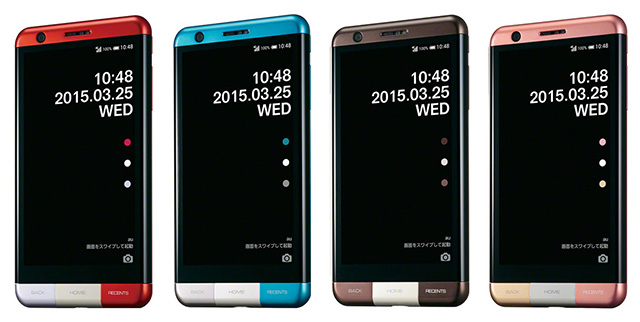
You can read a separate review about Infobar A01, but now let's look at some of the features of the A03.
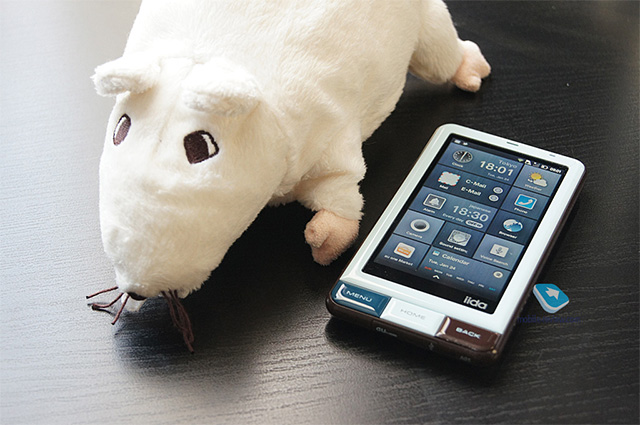
The Infobar A03 is made of anodized aluminum, uses a unibody design, and comes in four color options: red, turquoise, dark brown and pink. For the Japanese, these names, of course, sound more pleasant and romantic, even in English: Nishikigoi, Pool, Mocha Brown, Sakura Iro. For the smartphone, they also created a line of branded cases designed by various Japanese designers and a special holder made of wood. Its design and production was carried out by the Japanese company Maruni, known for its projects to create various wooden furniture and large-scale work on the design of premises and even airports. For example, the design and selection of materials for different sections, as well as some of the fittings at the Oslo airport, Norway, by Maruni.
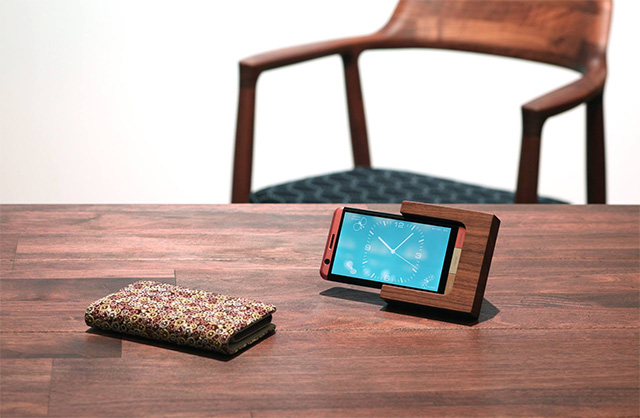
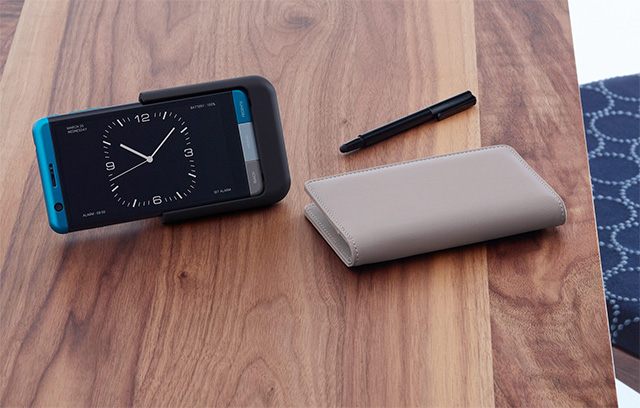
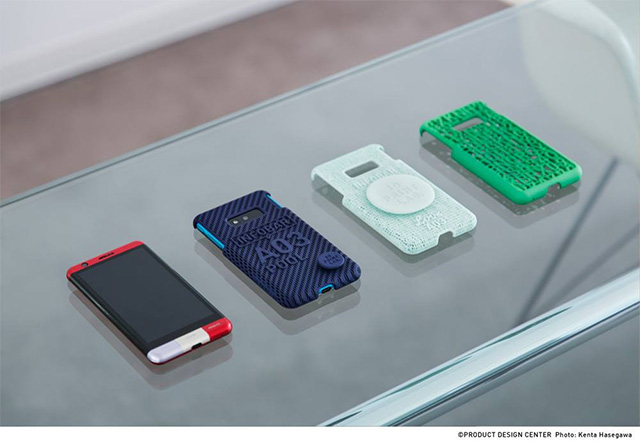
In terms of characteristics, the device belongs to the middle segment. Screen with a diagonal of 4.5 'and a resolution of 1920 × 1080 pixels based on IGZO technology from Sharp, platform Qualcomm Snapdragon 801, 2 GB of RAM and 16 GB of internal flash memory, a slot for a microSD card, 13 Vg main and 2 MP front cameras , a 2020 mAh battery and a full set of wireless interfaces: Wi-Fi, Bluetooth, NFC, infrared and LTE, including 800 MHz. Traditionally for almost any Japanese smartphone and phone, there is dust and moisture protection according to the IPX8 standard.
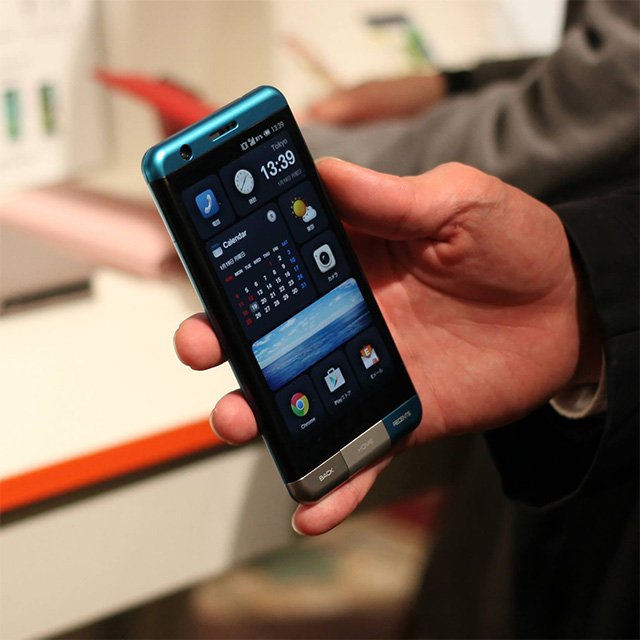
The smartphone is based on Android 4.4, but this is not particularly important. The interface here is in any case its own and it has nothing to do with the base system or with various shells like TouchWiz, Sense, Flyme, MIUI and so on. The main idea of iida UI is the so-called proprietary interface, square areas where you put a kind of widgets with various information. Like in Windows Phone, but more neat, nice and functional. Square blocks are animated and allow you to bring all the important information to the main screen.
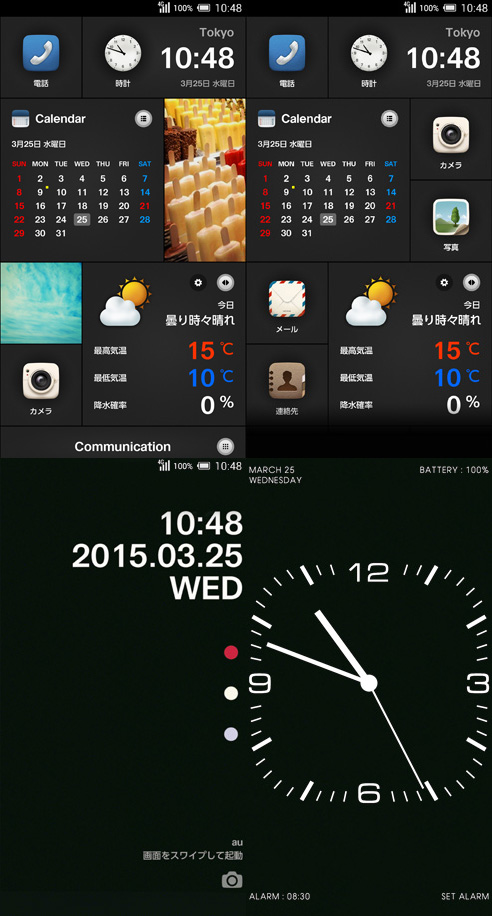
The smartphone is sold only in Japan, it is already available for purchase and costs about 36,000 rubles, if translated from yen. For the same money, you can take Apple iPhone 6 from the au operator, so the Infobar A03 cannot be called cheap. On the other hand, the device is very unusual both in appearance and interface design; it is not a smartphone for those who need flagships with the highest number of megapixels and megahertz, but a beautiful and practical accessory.
